#if I want a grocery chain store to sell me Mexican culture I can go to HEB!
Explore tagged Tumblr posts
Text
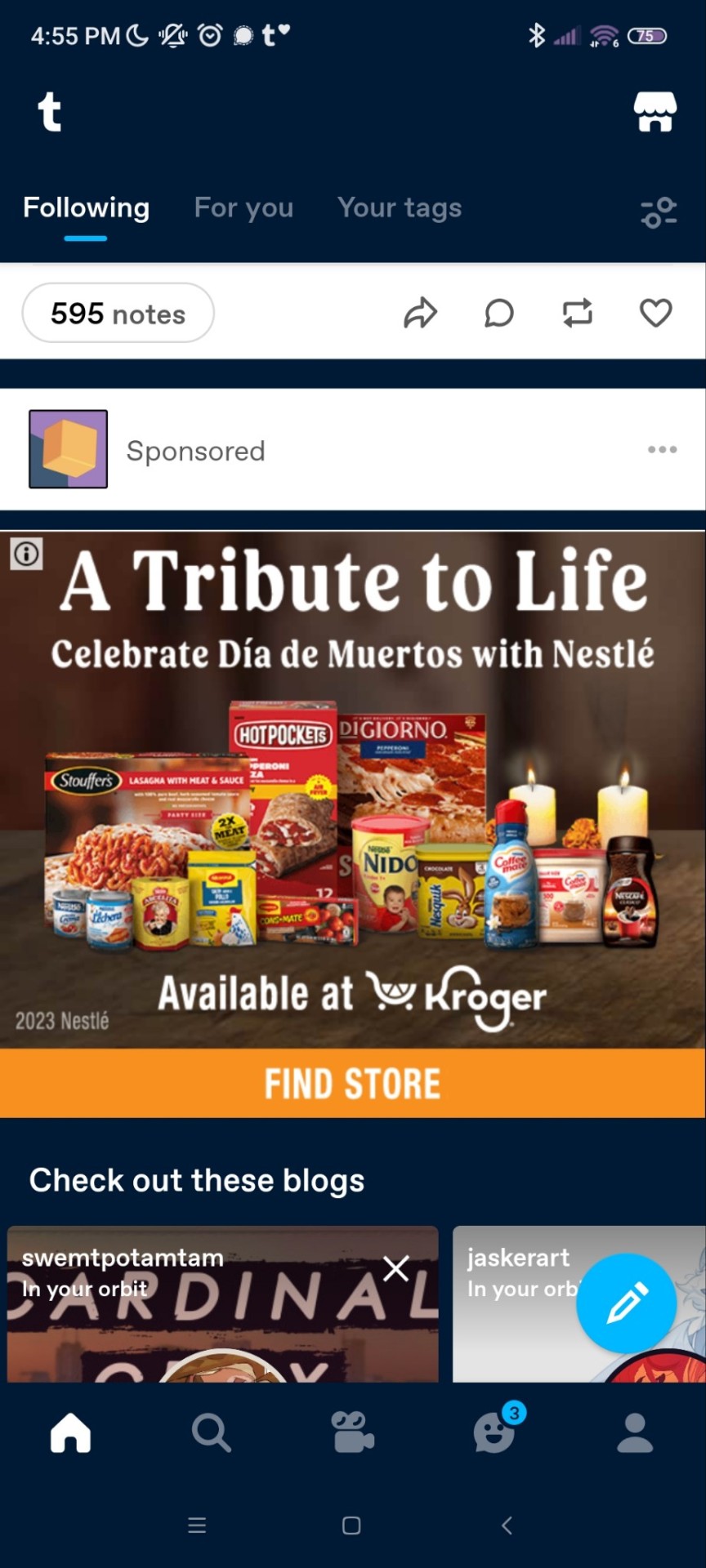
Ah yes. I have such fond memories of bringing fucking hot pockets to my uncle's grave in Mexico for dia de los muertos.
#dia de los muertos#tumblr ads#to be fair we did have “nes-qui” at my grandmas but she bought it for her americanized grandkids (me)#that and zucaritas#but fuck nestle and krogers for capitalizing on dia de los muertos#i get its gotten more popular the last several years#and the the book of life and coco really helped shine a light on mexican culture#but damn!#if I want a grocery chain store to sell me Mexican culture I can go to HEB!#their tortillas are so fucking good and handmade on the spot#and they dont tell me to buy fucking stoffers to honor my ancestors#rant over
44 notes
·
View notes
Photo



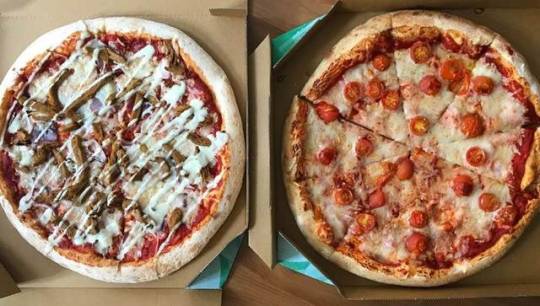
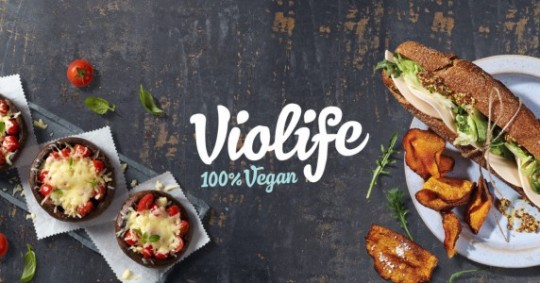
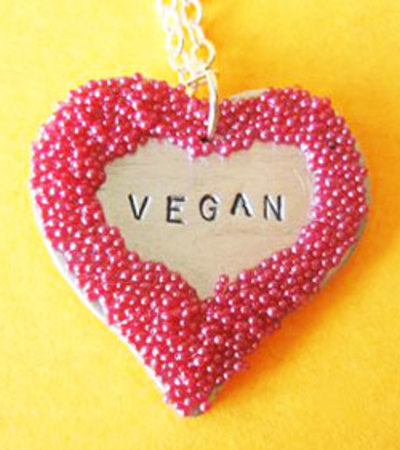


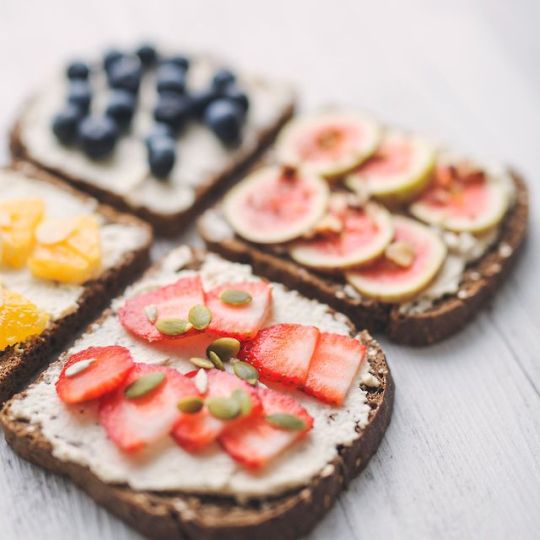
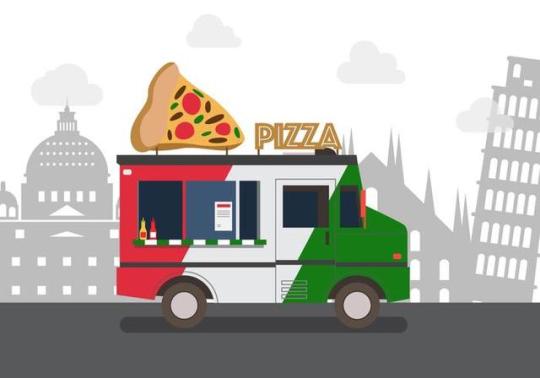
NEW ZEALAND STARTUP AIMS TO PERFECT VEGAN MOZZARELLA
“New Zealand-based food technology startup New Culture is working to create vegan cheese that closely mimics its dairy-derived counterpart. Similar to the process used by plant-based meat brand Impossible Foods, the company is working with elements of dairy on a molecular level to create plant-based substitutes that closely resemble cheese.”

“New Culture is first focusing on developing vegan mozzarella using a microbe that replicates the function of casein—a dairy-derived protein that is credited with giving cheese its distinctive texture and flavor. The startup is currently participating in IndieBio—a highly regarded biotechnology accelerator program that previously assisted companies such as Memphis Meats, Finless Foods, and New Wave Foods...once the company raises sufficient capital, he hopes to have New Culture’s vegan mozzarella available to the public within 18 months.”
(via New Zealand Startup Aims to Perfect Vegan Mozzarella | VegNews)
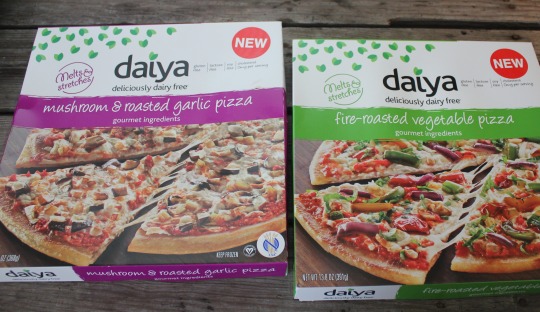
Lab-grown food startup wants to make dairy mozzarella, no animals required
“We want to make amazing tasting vegan cheese that is better in taste, structure, and function when compared with dairy cheese — as well as being healthier, far more sustainable and able to be enjoyed by everyone...However, we don’t think this can be done with just plant-based ingredients. Dairy proteins are responsible for most of what we love about dairy cheese and are so unique themselves that they cannot just be replicated in the plant-based world. This is why we are taking these essential dairy proteins known as casein proteins, and sustainably producing them ourselves without the cow.”
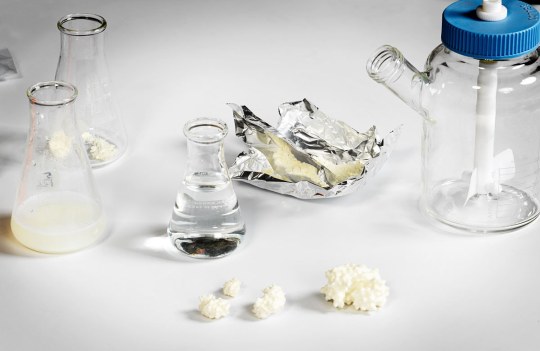
“Similar to what the Impossible Burger does with the heme protein, we are making casein proteins with the help of microbes...We are still very early in development...After we close our seed round later this year we will build a pilot process to begin making our cheese. Due to the nature of the technology we are working with, it will take longer to get to market than a fully plant-based food product. We hope to have a product for consumers to buy within 18 months.”
(via Lab-grown food startup wants to make dairy mozzarella, no animals required | Digital Trends)

WHOLE FOODS LAUNCHES ITS OWN VEGAN CHEESE LINE
“Supermarket chain Whole Foods Market recently debuted a new vegan cheese line under its 365 brand. The new palm oil-free...cheddar that are advertised to “melt and stretch” and are clearly labeled vegan. While the grocery chain offers a variety of vegan cheeses made by other brands, including Follow Your Heart, Daiya Foods, and Miyoko’s Kitchen, the new line is the first vegan cheese offered under its own brand.”
(via WHOLE FOODS LAUNCHES ITS OWN VEGAN CHEESE LINE | VegNews)

8 Vegan Cheeses You’ll Want To Add To Your Plant-Based Bucket List
“[W]e now live in an age where plant-based cheese alternatives are bountiful. Some are developed enough to just hit the spot, while others are so close that you actually can’t tell the difference between them or the real thing.”
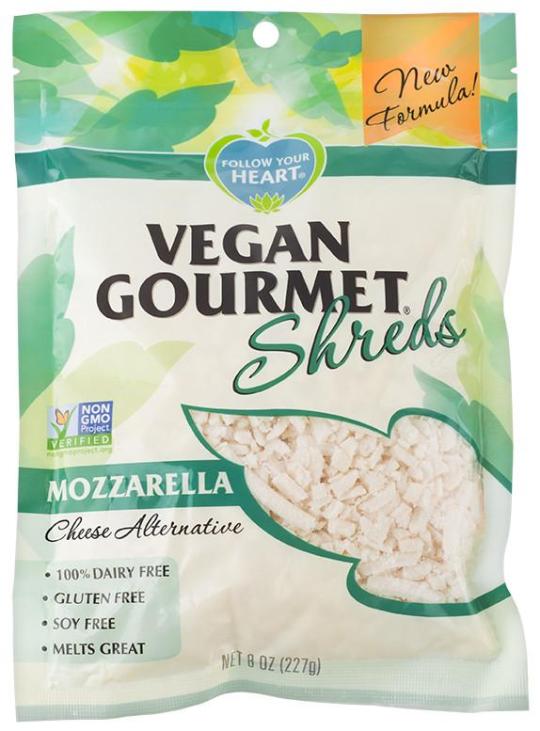
”One of the more popular brands of vegan cheese slices, you’ll find Follow Your Heart on the menu of viral vegan burger chains like Monty’s Good Burger...While Kite Hill is probably best known for their yogurts, they also produce almond milk-based cheeses such as ricotta...Mikoyo’s Creamery is believed to be one of the first brands to bring vegan cheeses into the mainstream. Mikoyo produces high-quality cheeses from nut milks that even include artisanal vegan cheese wheels... Violife makes a variety of vegan cheese options like cream cheese, parmesan, feta, smoked provolone, and cheddar. However, their take on queso was truly a mouthwatering experience.”

“Good Planet Foods prides themselves in a variety of tastes that tailor themselves to the consumer...slices come in a bevy of unique flavors such as garlic and herb, hot pepper, and tomato basil...Parmela Creamery draws from the subtle flavors that come from cashews. The company utilizes a slow-aging process for their nut cheeses that unlocks rich authentic flavors. Products include cheese spreads, meltable slices, cheese sauces, and meltable shredded cheese...Wayfare Foods specializes in dairy-free cream cheeses (with flavors like onion chive, green olive, and jalapeño)...Bute Islands was one of the best vegan cheeses...“My favorite was the Greek style...It was fashioned after feta cheese and their rendition was super creamy and slightly tangy, just like a good feta.”
(via 8 Vegan Cheeses You’ll Want To Add To Your Plant-Based Bucket List | So Delicious)

Booming Belgian Vegan Cheese Company Keeps Selling out of Cheese
“A new vegan cheese company is taking Belgium by storm and seeing extraordinary growth and popularity after less than five months in business.Launched November 2018 in just 15 retail locations, Pa’lais is already being sold at over 130 retailers throughout Belgium.Food influencers nationwide have used the vegan cheese, and the events Pa’lais holds always sell out their products...Additionally, an astonishing 90% of customers who sample their products during in-store tastings end up purchasing the vegan cheese.”
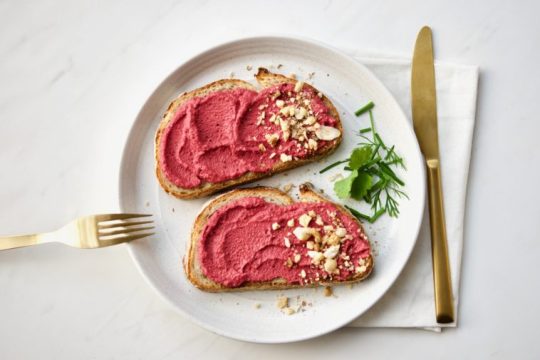
”The Belgium-based company sells organic vegan cream cheese style spreads that are made with fermented cashews and almonds. The cheese is free of additives and preservatives, oil, gluten, GMOs, starch and soy. Each has a unique color and goes perfectly on toast, crackers or sandwiches. The vegan cream cheese can even be used in dishes like pizza or cheesecake.”

“A year ago, I had the idea to design a plant-based food that provides the same pleasure as a spread-cheese but that is better for our health, the planet and the animals...I wanted to create a product that would appeal to both those looking to eat without dairy (vegetarians, vegans or lactose intolerant) and the curious ones who want to indulge themselves without overlooking the taste and health..I wanted to show everyone it is not necessary to harm others to eat delicious food...I quickly discovered that it was possible to use traditional cheese making techniques on plant-based milk...I was able to create ‘camemberts’ and ‘blue cheeses’, but cream-cheeses like spread were the ones that interested me the most because Belgians have a great tradition of bread, sandwiches and toasts.”
(via Booming Belgian Vegan Cheese Company Keeps Selling out of Cheese | VegNews)

Know how to make a better vegan cheese? Some Minnesota firms have money for you
“Frozen-pizza makers at Schwan’s foods know consumers want more plant-based foods, but they can’t find a vegan cheese with the right amount of stretch, melting and browning qualities.”

”Startups, entrepreneurs and inventors typically have to fight to get their ideas and voices heard by larger, established companies or investors. A reverse-pitch event flips that around by having the larger — and often better funded — players present their problems to creative minds outside their organization. Fields like technology and biopharmaceuticals have used this approach, sometimes called open innovation.”
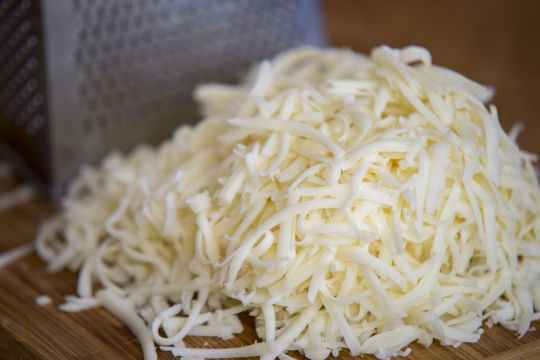
”There is, however, a risk to opening up to outsiders...There’s also a real chance the solutions won’t work...“First, you have to make sure it’s doable and then you have to find a way for it to be scalable...But if we aren’t trying, we aren’t going to be able to hit the ball.”
(via Know how to make a better vegan cheese? Some Minnesota firms have money for you | Star Tribune)

VEGAN PIZZA POP-UPS ARE THE NEW TACO STANDS
“Taco stands and Mexican food trucks may never grow old, but there’s a new pop-up trend that’s offering hungry pedestrians a choice...Pop-up pizza joints have infiltrated the street food scene, bringing a new meaning to pizza delivery. From thick and fluffy focaccia crusts to wood-fired pies with homemade vegan mozzarella, traveling pizzaiolos have mastered the art of pizza on-demand.”
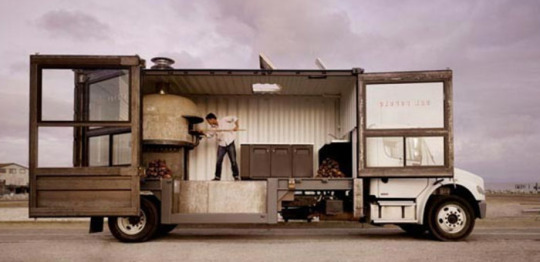
(via VEGAN PIZZA POP-UPS ARE THE NEW TACO STANDS | VegNews)

0 notes
Text
Life in Walmart El Paso store before the mass shooting shines a light on why it was targeted
Two nations physically and culturally come together in El Paso. The bustling Walmart on the city’s east side, just minutes from the border with Mexico, exemplified those ties.The store was a border version of Middle America: A large number of Mexican-American families from El Paso crowded into the megastore daily for inexpensive groceries and, late in the summer, back-to-school supplies.Almost as often, families from Mexico drove across the international bridge to buy bargain TVs, cartons of nappies and discount clothing.It was one of the company’s top 10 in America: Where most stores of its kind average 14,000 customers a week, the El Paso Walmart, a retail analyst said, saw 65,000.Its racks are stocked with Mexican football jerseys, cans of chillies and salsa and Mexican flags, folded beneath the American and Texas flags on display. The pharmacy’s staff members are fully bilingual.“It really does feel like a United Nations store,” said Burt Flickinger, a retail consultant who has visited and studied the store.This is the border as it is lived everyday, far from the heated national debate over immigration. Children come and go across the international boundary for school, others come for jobs and shopping.It was in this Walmart, on a sunny Saturday morning, where a white gunman angered by what he called the “Hispanic invasion of Texas” chose to carry out a horrific act of violence.Disturbed gunmen have previously targeted American Jews, African Americans, Muslim-Americans, gay Americans and American journalists.Authorities say the El Paso gunman, identified as Patrick Crusius, 21, targeted Mexican and Mexican-American shoppers and workers in the attack on Saturday, killing 20 people and wounding 27 others.While there have been numerous Hispanic victims in several of the mass shootings that have shocked the nation in recent years — including the Pulse nightclub attack in Orlando, Florida, in 2016 — the massacre in El Paso was the deadliest anti-Latino attack in modern US history.The manifesto that a federal law enforcement official said Mr Crusius wrote and posted online minutes before the shooting made his anti-immigrant beliefs clear.He wrote that immigration “can only be detrimental to the future of America,” and bemoaned a future in which Hispanics would take control of the local and state governments, “changing policy to better suit their needs”.The apparent anti-Latino motive behind the attack stunned residents and officials, who saw the nation’s fraught debate over culture and immigration erupting with sudden violence in a city that had been both a focal point of immigration and a place — like many border towns — where the notion of immigration and national identity had rarely felt divisive.“What was most shocking to me is not that it was a mass shooting but the motive, the fact that he specifically targeted Mexican-Americans and Hispanics,” said Gilda Baeza Ortega, 67, a librarian at Western New Mexico University who was in El Paso visiting her parents. “He came here for us.”Across the country, many Latinos were describing the targeted killings as a 11 September moment, and the FBI’s announcement Sunday that it had opened a domestic terrorism investigation only reinforced that belief, especially in a city that is 80 per cent Hispanic.“This Anglo man came here to kill Hispanics,” El Paso’s sheriff, Richard Wiles, said. “I’m outraged, and you should be, too. This entire nation should be outraged. In this day and age, with all the serious issues we face, we are still confronted with people who will kill another for the sole reason of the colour of their skin.”Before the attack upended the sense of normalcy in El Paso, the Walmart and the shopping area surrounding it lured many people from across the border, as well as many El Paso residents looking for something to do on a weekend afternoon.People from both countries would go to new releases at a cinema not far from the Walmart, shop for discount clothing at a nearby Ross Dress for Less or stop in for happy hour at Hooters.Texas has long been a state where Hispanics have shaped and in many ways defined what it means to be Texan. But in recent years, the old white Texas and the new Hispanic Texas have repeatedly clashed.Some of this tension involves who gets to tell history. Activists and scholars have begun focusing on the legacy of racist campaigns of terror against Latinos in this part of the West, including the killings a century ago of Mexicans by lynch mobs made up of Anglos.Going back further in the debate over any “invasion of Texas,” historians note that it was actually carried out by Anglo slaveholders who migrated to the region in the 19th century when it was still part of Mexico, then seceded in 1836 and enshrined white supremacy in the first Texas Constitution.The more recent clashes have led not only to years-long court battles but also to physical confrontations between white and Hispanic politicians on the floor of the Texas House of Representatives.White Republican officials in Texas have publicly expressed alarm about what they describe as an “invasion” of migrants spreading disease at the Texas border.El Paso residents have now seen the most hateful parts of the debate bringing violence to their doors.Adriana Ruiz was among those who left flowers, having picked up a bouquet from another Walmart in El Paso after church.“I just...” she said, her voice trailing off. “Right now, my heart is broken.”Ms Ruiz, 50, said she was pained by the animosity that had surrounded the national debate about El Paso as it became a ground zero of sorts in recent months as migrants came rushing in from Central America.A hateful act seemed like such a stark contrast to the vibe and texture of the city where she was born and raised. She remembered going to Ciudad Juarez in Mexico on Saturdays with her mother, grandmother and aunts to go shopping.“No matter who it is,” she said. “We make them feel at home.”The shooting, she said, showed that a toxic environment outside El Paso was finding its way into the city. She heard it in the remarks about life in the city that did not reflect what she knew, especially those from Donald Trump, the US president.“That is something that came from the top,” Ms Ruiz said, referring to the frequent portrayal of the border as a place of crisis that was threatened with invaders from outside.“It’s idiotic,” she said, conceding that her anger had left her stumped for the right words. “I want to say some harsher words, but it’s not right."Larry Scott, 40, said he had been in the Walmart on Saturday morning, several hours before the shooting. He had gotten two new tattoos on his left arm recently, including one of the Monopoly man holding a bag of money, and he needed ointment.When he heard about the attack, Mr Scott, who said he serves in the Army and is stationed at nearby Fort Bliss, felt an urge to do something, to somehow pitch in. He came back to the store Sunday, but that offered little consolation.El Paso was not his hometown. He was originally from Dallas, he said. Yet he had grown attached to the city.“It’s not a big city,” he said. “But it’s our home. I’m hoping this makes El Paso stronger.”The Walmart where the shooting occurred lies on the east side of El Paso along Interstate 10, near a number of hotels, chain restaurants and a mall.Aside from the wares that are aimed at Mexican shoppers, it resembles hundreds of other Walmarts across America. The store does not sell guns, but does sell ammunition, a Walmart spokesman, Randy Hargrove, said.On Sunday, the store remained blocked off by police officers who continued to collect evidence of the massacre inside. The parking lot was still packed, with the same cars that had been sitting there since the shooting the day before.A steady line of cars drove by, some with cameras pressed to their windows. One man walked up, stood silently for a moment, made the sign of the cross and walked away.New York Times
from Yahoo News - Latest News & Headlines
Two nations physically and culturally come together in El Paso. The bustling Walmart on the city’s east side, just minutes from the border with Mexico, exemplified those ties.The store was a border version of Middle America: A large number of Mexican-American families from El Paso crowded into the megastore daily for inexpensive groceries and, late in the summer, back-to-school supplies.Almost as often, families from Mexico drove across the international bridge to buy bargain TVs, cartons of nappies and discount clothing.It was one of the company’s top 10 in America: Where most stores of its kind average 14,000 customers a week, the El Paso Walmart, a retail analyst said, saw 65,000.Its racks are stocked with Mexican football jerseys, cans of chillies and salsa and Mexican flags, folded beneath the American and Texas flags on display. The pharmacy’s staff members are fully bilingual.“It really does feel like a United Nations store,” said Burt Flickinger, a retail consultant who has visited and studied the store.This is the border as it is lived everyday, far from the heated national debate over immigration. Children come and go across the international boundary for school, others come for jobs and shopping.It was in this Walmart, on a sunny Saturday morning, where a white gunman angered by what he called the “Hispanic invasion of Texas” chose to carry out a horrific act of violence.Disturbed gunmen have previously targeted American Jews, African Americans, Muslim-Americans, gay Americans and American journalists.Authorities say the El Paso gunman, identified as Patrick Crusius, 21, targeted Mexican and Mexican-American shoppers and workers in the attack on Saturday, killing 20 people and wounding 27 others.While there have been numerous Hispanic victims in several of the mass shootings that have shocked the nation in recent years — including the Pulse nightclub attack in Orlando, Florida, in 2016 — the massacre in El Paso was the deadliest anti-Latino attack in modern US history.The manifesto that a federal law enforcement official said Mr Crusius wrote and posted online minutes before the shooting made his anti-immigrant beliefs clear.He wrote that immigration “can only be detrimental to the future of America,” and bemoaned a future in which Hispanics would take control of the local and state governments, “changing policy to better suit their needs”.The apparent anti-Latino motive behind the attack stunned residents and officials, who saw the nation’s fraught debate over culture and immigration erupting with sudden violence in a city that had been both a focal point of immigration and a place — like many border towns — where the notion of immigration and national identity had rarely felt divisive.“What was most shocking to me is not that it was a mass shooting but the motive, the fact that he specifically targeted Mexican-Americans and Hispanics,” said Gilda Baeza Ortega, 67, a librarian at Western New Mexico University who was in El Paso visiting her parents. “He came here for us.”Across the country, many Latinos were describing the targeted killings as a 11 September moment, and the FBI’s announcement Sunday that it had opened a domestic terrorism investigation only reinforced that belief, especially in a city that is 80 per cent Hispanic.“This Anglo man came here to kill Hispanics,” El Paso’s sheriff, Richard Wiles, said. “I’m outraged, and you should be, too. This entire nation should be outraged. In this day and age, with all the serious issues we face, we are still confronted with people who will kill another for the sole reason of the colour of their skin.”Before the attack upended the sense of normalcy in El Paso, the Walmart and the shopping area surrounding it lured many people from across the border, as well as many El Paso residents looking for something to do on a weekend afternoon.People from both countries would go to new releases at a cinema not far from the Walmart, shop for discount clothing at a nearby Ross Dress for Less or stop in for happy hour at Hooters.Texas has long been a state where Hispanics have shaped and in many ways defined what it means to be Texan. But in recent years, the old white Texas and the new Hispanic Texas have repeatedly clashed.Some of this tension involves who gets to tell history. Activists and scholars have begun focusing on the legacy of racist campaigns of terror against Latinos in this part of the West, including the killings a century ago of Mexicans by lynch mobs made up of Anglos.Going back further in the debate over any “invasion of Texas,” historians note that it was actually carried out by Anglo slaveholders who migrated to the region in the 19th century when it was still part of Mexico, then seceded in 1836 and enshrined white supremacy in the first Texas Constitution.The more recent clashes have led not only to years-long court battles but also to physical confrontations between white and Hispanic politicians on the floor of the Texas House of Representatives.White Republican officials in Texas have publicly expressed alarm about what they describe as an “invasion” of migrants spreading disease at the Texas border.El Paso residents have now seen the most hateful parts of the debate bringing violence to their doors.Adriana Ruiz was among those who left flowers, having picked up a bouquet from another Walmart in El Paso after church.“I just...” she said, her voice trailing off. “Right now, my heart is broken.”Ms Ruiz, 50, said she was pained by the animosity that had surrounded the national debate about El Paso as it became a ground zero of sorts in recent months as migrants came rushing in from Central America.A hateful act seemed like such a stark contrast to the vibe and texture of the city where she was born and raised. She remembered going to Ciudad Juarez in Mexico on Saturdays with her mother, grandmother and aunts to go shopping.“No matter who it is,” she said. “We make them feel at home.”The shooting, she said, showed that a toxic environment outside El Paso was finding its way into the city. She heard it in the remarks about life in the city that did not reflect what she knew, especially those from Donald Trump, the US president.“That is something that came from the top,” Ms Ruiz said, referring to the frequent portrayal of the border as a place of crisis that was threatened with invaders from outside.“It’s idiotic,” she said, conceding that her anger had left her stumped for the right words. “I want to say some harsher words, but it’s not right."Larry Scott, 40, said he had been in the Walmart on Saturday morning, several hours before the shooting. He had gotten two new tattoos on his left arm recently, including one of the Monopoly man holding a bag of money, and he needed ointment.When he heard about the attack, Mr Scott, who said he serves in the Army and is stationed at nearby Fort Bliss, felt an urge to do something, to somehow pitch in. He came back to the store Sunday, but that offered little consolation.El Paso was not his hometown. He was originally from Dallas, he said. Yet he had grown attached to the city.“It’s not a big city,” he said. “But it’s our home. I’m hoping this makes El Paso stronger.”The Walmart where the shooting occurred lies on the east side of El Paso along Interstate 10, near a number of hotels, chain restaurants and a mall.Aside from the wares that are aimed at Mexican shoppers, it resembles hundreds of other Walmarts across America. The store does not sell guns, but does sell ammunition, a Walmart spokesman, Randy Hargrove, said.On Sunday, the store remained blocked off by police officers who continued to collect evidence of the massacre inside. The parking lot was still packed, with the same cars that had been sitting there since the shooting the day before.A steady line of cars drove by, some with cameras pressed to their windows. One man walked up, stood silently for a moment, made the sign of the cross and walked away.New York Times
August 05, 2019 at 11:32AM via IFTTT
0 notes
Text
Texas’s Favorite Grocery Store Is a Way of Life<p class="p-dropcap has-dropcap p-large-text" id="vavTjJ"><strong>The story of H-E-B seems</strong> unoriginal, as far as cult grocers go: A family launches a store in a small town a long time ago (in this case, the Butt family, in Kerrville, Texas, in 1905). That store earns a loyal following and expands throughout the region (Texas). It becomes known among its fans for its wildly dedicated employees (many have worked there for 30-plus years), top-notch customer service (only at H-E-B will someone hand you a freshly baked tortilla to snack on while you shop), and unique food products (hatch chile cookies!). Adoring <a href="https://www.epicurious.com/expert-advice/the-best-grocery-store-in-america-is-heb-article">public odes</a> are published about it across the Internet. <a href="https://www.itemonline.com/news/local_news/customers-flock-to-new-h-e-b-store-on-opening/article_1f9c3d27-617c-597d-9ab9-b9eeb81673bc.html">Long lines form</a> whenever a new location touches down. </p> <p id="D5oF9v">This tale could be told of any beloved regional grocery store — your Publixes, your Wegmans, your Harris Teeters — except that San Antonio-based H-E-B exists in a single U.S. state (with 52 stores across the border in Mexico) and is the 12th-largest private company in the country, <a href="https://www.forbes.com/largest-private-companies/list/#tab:rank">according to <em>Forbes</em></a>. What’s the difference between H-E-B and everyone else? Sure, it’s <a href="https://www.glassdoor.com/Award/Best-Places-to-Work-2018-LST_KQ0,24.htm">ranked among the top places to work</a> and is pretty ahead-of-the-curve with its mobile checkout (maybe that’s <a href="https://www.mysanantonio.com/business/local/article/Amazon-looked-at-H-E-B-Whole-Foods-to-break-into-11303341.php">why employees at Amazon suggested that the tech giant acquire H-E-B</a> before it settled on that <a href="https://www.eater.com/2017/6/16/15816202/amazon-buys-whole-foods">other Texas grocer</a>). </p> <p id="SciLGZ">But, really, H-E-B has just tapped into one of the most powerful cultural forces in existence: Texas pride. H-E-B’s corporate campus — where many of the buildings are made of Texas limestone, and the neoclassical design is quintessential Texas architecture — runs along the San Antonio River Walk, and is built on an old military compound called the <a href="https://tshaonline.org/handbook/online/articles/qbs02">San Antonio Arsenal</a>. A Texas landmark, known for being a major supply depot during both world wars, it now supplies Texas to Texans, from Whataburger Fancy Ketchup to Takis rolled tortilla chips to Franklin Barbecue sauce. </p> <p id="AJRBzf">The H-E-B <a href="https://careers.heb.com/about-heb/">website</a> prominently declares that H-E-B has “proudly served Texans since 1905,” and that its stores are all about “outfitting Texas families with all they need for Texas lifestyles.” In 2016, <a href="https://www.nytimes.com/2016/05/08/us/what-makes-texas-texas.html">Manny Fernandez succinctly described</a> what that means in the<em> New York Times:</em> “You don’t just move to Texas. It moves into you ... We tattoo Texas on our arms, buy Texas-built trucks and climb fire escapes with Texas dirt in our pockets. Place, we are unsubtly suggesting, matters.” Being from most states is just part of your bio; being from Texas is a lifelong commitment. </p> <p id="2F2SFv">I know this is true because I am from Texas. My parents moved the family to Dallas from New Hampshire when I was around a year old. My dad shades his face from the Texas sun with a cowboy hat on his daily walks, and has long identified as more Texan than Indian; as kids, my sister and I posed for photos off the highway amid the Texas bluebonnets every spring; I know all the lyrics to the de facto state song, “Deep in the Heart of Texas”; and though I live in Brooklyn now, I still wear shorts emblazoned with the Texas flag to the gym. </p> <p id="50sbXJ">If you’re not from Texas, the state might seem like one giant stereotype of cowboys, conservatism, and brashness. But Texan identity is more complex than that: There’s rural Texas, Silicon Prairie Texas, honky-tonk Texas, hipster Texas, Latinx Texas, oil-soaked Texas, Vietnamese Texas, and yes, gun-slinging Texas — just to name a few. A grocery store can be a prism for identity, refracting and focusing it; Whole Foods famously does this for an entire group of people held together by little more than social class and a vague sense of taste. What’s unique about H-E-B fandom is that its customers are ultimately loyal to H-E-B <em>in so far </em>as they are loyal to Texas. This is perhaps one of the most distinguishing factors between H-E-B and the other cult grocers: People love Publix subs, crave Trader Joe’s snacks, and revere Wegmans’ customer service, but H-E-B is a way of life. </p> <hr class="p-entry-hr" id="sR5Xpr"/><p class="p-large-text" id="uEuADT"><strong>Have you ever wanted</strong> a cast-iron skillet in the shape of the Lone Star state? Party tray? Burger-shaper? Cutting board? Pecan cake? Cheese? You can find them all in the aisles of H-E-B. Texas’s unique outline, with its right angles and craggly edges, is probably <a href="https://www.texasmonthly.com/the-culture/the-shape-were-in/">one of the most recognizable</a> in the country. There are hundreds — literally hundreds — of Texas-shaped items at H-E-B. An employee at a San Antonio location tried to convince me that the Texas-shaped tortilla chips are superior because the unique silhouette, with its handle and curved ridges, was practically made for scooping up salsa. A shopper from Schulenburg, who regularly drives 25 miles to visit her nearest H-E-B, told me that she fills her grandchildren’s Christmas stockings exclusively with Texas-shaped novelty items purchased at H-E-B stores.</p> <p id="zXt6A1">It turns out that, after oil, Texas pride may be the state’s single most lucrative natural resource — in part because it can take so many different forms, each of which can be sold to a distinct audience. Against the backdrop of a <a href="https://go.redirectingat.com?id=66960X1516589&xs=1&url=https%3A%2F%2Fwww.newyorker.com%2Fmagazine%2F2017%2F07%2F10%2Famericas-future-is-texas" rel="nofollow noopener" target="_blank">broader conversation about the future of Texas</a> and Texan identity, H-E-B is unabashedly embracing the longer, wider, more diverse view of <a href="https://www.texasmonthly.com/the-culture/the-native-texan/">what it means to be a proud Texan</a>, and reaping the financial rewards of doing so; H-E-B’s more than 340 stores span several concepts, each of which appeals to a specific Lone Star State community or sensibility.</p> <p id="uHKAEn">Most notably, in 2006, H-E-B launched Mi Tienda, a grocery chain that caters to the needs of the state’s vast Latinx population, with a masa factory and tortilla presses in each store, products like dulce de leche and Mexican wedding cookies, and <a href="http://mitiendatx.com/">a default Spanish-language website</a>. Additionally, there’s Central Market, H-E-B’s specialty-foods store, which was launched in 1994 to appeal to a more globalized audience by offering a cross section of the cuisines that comprise an increasingly multicultural Texas, and now competes with Whole Foods; Joe V’s Smart Shop, a budget grocery brand; and Oaks Crossing, a family-friendly restaurant in one San Antonio store serving chicken-fried carne asada and brisket nachos. </p> <p id="ZMpoyY">Four years ago, H-E-B ventured into the barbecue business — the category of food that Texans are the <em>most</em> particular about (even if <a href="https://www.eater.com/2018/3/7/17081968/best-food-texas-tex-mex-barbecue">Tex-Mex is what more Texans actually eat</a>). “What is the most Texan food we can put out there?” Kristin Irvin, who is in charge of development for H-E-B’s True Texas Barbecue, asked me. “It’s barbecue.” She added that her team tasted barbecue from more than 25 different iconic Texas spots — Black’s,<strong> </strong>Franklin, and the like — to make sure that their version would pass muster. To Irvin and her team’s credit, the food I tried at a True Texas Barbecue inside a San Antonio H-E-B was pretty good — the sausage was appropriately snappy and well-spiced, the char on the brisket was just right, and even the turkey tasted impressively juicy. There are now 10 True Texas Barbecue locations spread across the state. </p> <p id="O44eMa">True Texas Barbecue was followed by another True Texas business, True Texas Tacos, which opened earlier this year in San Antonio. The restaurant, which focuses on breakfast tacos, is housed in another spin-off concept, the H-E-B Convenience Store, because eating gas station breakfast tacos is, to some, a Texas rite of passage. At True Texas Tacos, the tortillas are flour (anything else would be blasphemous) and freshly made on site. The fillings come in <em>barbacoa</em> (stewed cow’s head), <em>picadillo</em> (ground beef), and my personal favorite, a crisp slab of bacon with refried beans and cheese. </p> <p id="azF1Yn">You can also grab a Big Red, the bubble gum-flavored soda that was invented in Waco and is taken as a matter of fact to be the ideal counterpart to a smoky barbacoa taco. When an H-E-B employee found out that I had never even heard of Big Red, despite growing up less than 100 miles away from its birthplace, they immediately filled a large cup with the frighteningly red soda, and made me try it with the barbacoa taco — the combo was at first cloying, then pleasantly salty. (I probably could have done without the Big Red.) Still, I couldn’t believe that I had missed out on this allegedly quintessential Texas experience. It made me wonder: If H-E-B doesn’t do it, is it really Texan?</p> <p id="C78439">In Dallas, where I’m from, there’s no vanilla H-E-B location, a source of <a href="https://www.reddit.com/r/texas/comments/8nw1fa/rant_why_is_there_no_heb_in_dallas/">extreme annoyance</a> among locals. But my family has long been devoted to Central Market, where we could buy whole spices, ghee, <em>masoor dal</em> (red lentils), and whole-wheat tortillas, which are (still) the closest approximation my mom has found to roti in any mainstream grocery store. Central Market also introduced my family to English double cream, arborio rice, and miso, broadening our palates with tastes from other cuisines. There are still sizable communities that H-E-B could do a better job of showcasing — the state’s robust immigrant populations from China and Vietnam come to mind — but it’s hard to think of another brand that’s as expansive in its vision of who and what gets to be Texan, or that comes as close to its aspirations to represent all of Texas. Whatever the future of Texas looks like, there’s a good chance it’ll show up in H-E-B.</p> <hr class="p-entry-hr" id="cqZ2Ua"/><p class="p-large-text" id="MY2nZ2"><strong>We may </strong><a href="https://www.curbed.com/a/texas-california"><strong>live in</strong> the United States of California and Texas</a>, but H-E-B has no plans to expand beyond Texas, at least in the U.S. Julie Bedingfield, an H-E-B public affairs manager, says that the company gets requests to open stores outside of Texas, mainly from Texas natives living elsewhere, “every single day.” You’d think that, in the same way that Popeyes has exported its Louisiana fried chicken across the country, H-E-B would <em>want </em>to sell its brand of Texas to people outside of the state. But H-E-B just wants to dig into its native soil even harder: Shortly after Amazon acquired Austin-based Whole Foods, H-E-B announced the creation of a tech and innovation lab in Austin, which will house its latest acquisition, a Texas-based delivery app called Favor. </p> <p id="8Ypp10">The strategy seems to be working. “I don’t really like Whole Foods after they got bought by Amazon,” an H-E-B customer in San Antonio told me. “I don’t like seeing the Amazon stuff everywhere.” With H-E-B, on the other hand, “I feel like they do things to support the community,” she added. “Many people I know, their kids work there ... I think H-E-B has earned the monopoly.” </p> <p id="ceD2Rr">The dedicated barbecue sauce aisles and the chicken-fried steak may sometimes seem a bit like Texas caricature — but whether or not every H-E-B customer connects with every Texas-adjacent item isn’t the point. It’s all just a way for H-E-B to communicate its message, loud and clear: <em>We get it. You love Texas, and so do we. </em></p> <p class="c-end-para" id="fO5SdF">I’ve noticed, living in New York, that people tend to write off Texas as a Wild West of conservatism and unruliness. Similarly, when my parents moved to Dallas from Nashua, New Hampshire in the ’90s, everyone told them they would face intense racism. Instead, we’ve all found the opposite to be true, at least where we’ve lived — Texans, on the whole, are open, honest, dedicated, and friendly. Maybe that’s why H-E-B resonates so strongly in Texas. The stores represent Texans as they<em> </em>see themselves. There is no attempt to construct a monolithic image of Texas — or even to help people outside of Texas understand Texas. H-E-B is the secret that only Texans are in on. It’s a retailer whose ethos is very clear: This is Texas — where the food is better, the people are more loyal, and the shape of our state is actually quite remarkable. <em>Y’all got any questions? </em></p> <p id="J8iole"><a href="https://twitter.com/PKgourmet"><small><em>Priya Krishna</em></small></a><small><em> is a food writer who contributes regularly to the </em></small><small>New York Times</small><small><em>, </em></small><small>Bon Appétit</small><small><em>, and other publications. Her cookbook, </em></small><a href="https://go.redirectingat.com?id=66960X1516589&xs=1&url=https%3A%2F%2Fwww.amazon.com%2FIndian-ish-Recipes-Antics-Modern-American%2Fdp%2F1328482472%2Fref%3Dsr_1_1%3Fie%3DUTF8%26qid%3D1536589970%26sr%3D8-1%26keywords%3Dindianish" rel="nofollow noopener" target="_blank"><small>Indian-ish</small></a><small><em>, is out April 2019. </em></small><br/><a href="https://www.instagram.com/laurakraaydesign/"><small><em>Laura Kraay</em></small></a><small><em> is a freelance illustrator living in Austin, Texas. </em></small><br/><small><em>Fact checked by </em></small><a href="https://twitter.com/emgrill_o?lang=en"><small><em>Emma Grillo</em></small></a><br/><small><em>Copy edited by Rachel P. Kreiter</em></small></p> <aside id="YtlPqm"><div class="c-newsletter_signup_box" id="newsletter-signup-short-form" data-newsletter-slug="eater" readability="7.8834196891192"> <div class="c-newsletter_signup_box__main" readability="33"> <span class="c-newsletter_signup_box__icon"> <svg xmlns="http://www.w3.org/2000/svg" xmlns:xlink="http://www.w3.org/1999/xlink" version="1.1" id="Layer_1" x="0px" y="0px" viewbox="0 0 38 54.231" xml:space="preserve"><g><path d="M1,20.304v9.981v6.393c0,9.046,7.332,16.375,16.375,16.375H33.75v-11.09H17.375 c-2.914,0-5.285-2.369-5.285-5.285v-6.393h18.383v-9.981H12.09V11.09h21.66V0H1V20.304z"/></g></svg></span> <h3 class="c-newsletter_signup_box__title"> Eater.com </h3> <p class="c-newsletter_signup_box__blurb">The freshest news from the food world every day</p> </div> <div class="c-newsletter_signup_box__disclaimer" readability="8.6"> By signing up, you agree to our <a href="https://www.voxmedia.com/pages/privacy-policy">Privacy Policy</a> and European users agree to the data transfer policy. </div> </div> </aside><br/><br/>Source: https://www.eater.com/2018/12/11/18133776/heb-texas-origin-cult-following<br/><img src="https://thumbs.dreamstime.com/z/chef-cooking-kitchen-stove-flame-frying-pan-31742315.jpg"/><br/>
0 notes
Text
I Made Myself Hungry Writing This
Соловья баснями не кормят.
You can’t feed a nightingale on fables.
(Fine words do not make full stomachs.)
It’s time to talk about something super important…
Food.
This might be a bit premature. I am still constantly discovering new restaurants--just getting started on my food journey here. But at the end of the semester I’ll post a comprehensive list of all the restaurants I recommend.
This post might not be super interesting for those not planning on any travel to SPB, but I figured I’d try and give some helpful information to those who are.
I’ll break it down for ya.
Stolovayas
Stolovayas (столовая) are your #1 food best friend in Russia. The word stolovaya can translate to dining room (more like, canteen in this situation), and that’s what these restaurants are kind of like. You’ve walked into someone’s house and they have a big line of food they’ve prepared for you to choose from. Each stolovaya is different every day with so many options. Main dishes, sides, salads, soups, coffee, pies, desserts, etc. And it’s all crazy cheap. I went to one earlier this week where I got fish, rice, a pastry, a small salad, and coffee all for 350 rubles (about seven dollars). I also like them because they’re fast. You pay when you get your food so there’s no waiting on the check.

Grocery Shopping
Grocery shopping was a little daunting for me at first. It’s overwhelming to be worried about speaking another language while simultaneously trying to figure out what everything is and how it works. But shopping is actually pretty easy once you get acclimated. There are a couple of 24-hour grocery stores by campus. Most students either go to Dixie (дикси) or the bigger one, Perekrestok (перекресток). The Dixie seems to have better prices on a lot of things, but Perekrestok has more variety and a more typical, comfortable set-up, comparable to American grocery stores. You have to pay for grocery bags here, so it’s better just to bring your own each time or buy a reusable one there. The only thing that can maybe trip you up is that in bigger grocery stores you have to weigh your own produce. Just put your produce on the scale, type the number that was near it into the machine, and it will print out your barcode to stick on the bag. So far my grocery staples here have been lots of fruit, eggs, bread, peanut butter, and brie. (Healthy, I know right?). But lots of the other students can do wonders with some rice and vegetables.
It’s a metro stop away, but I highly suggest taking trips to what we call the “Russian Costco”--Ashan (ашан). It’s just a huge store, like a walmart, where you can get school supplies, clothes, toiletries, and food for a good price. The only hassle is trekking back with all your goods on the crowded metro. (Eggs are less fragile than I expected, thankfully.)
The best place for buying produce it seems is Sennoy Rinock (Сенной Рынок). It’s a market outside one of the malls on Sadovaya. There’s an inside section with lots of different foods, but the outside section is crazy full of produce stands where you can get a ton of fresh fruits and veggies for pretty cheap. That is, if you can handle being called at from every other stand by the men selling. But just stay confident, ignore the calls, and you can get some great stuff for a good deal. I think our last time there we got two onions and three carrots for like 80 rubles (less than two dollars).
Russian Fast Food
Russian fast food is on another level. At first when someone suggested we go to Teremok (the main fast food place here), it felt wrong, but fast food does not have the same connotation here. Teremok has delicious pelmeni and a dozen kinds of blinis they make right before you. You can get lots of traditional Russian foods there for fast and cheap. Maybe not at the same level as your babushka’s, but still good.
Food From Other Cultures
Being in St. P is a great opportunity to try food from cultures you rarely have a chance to experience in the states. Maybe you lost Mexican food (RIP. I miss you, queso.), but all of the sudden there’s cuisines you never even thought about. And oh my god, Georgian food has so much cheese. Picture: bread filled with cheese and an egg on top. So make sure to try all you can while you’ve got the chance. So far I’ve only had Georgian and Armenian--both very good--but hoping to check out much more before I’m back in the states.
Comfort Food
Being in a new place, you need small comforts, and those are available too. I personally am obsessed with sushi so it’s been awesome to have lots of access to that here. (The chain sushi restaurant Evrazy may not be the best, but it is literally everywhere.) There are a couple of great burger places near the university too, Wave Burger and City Grill, where they also speak English very well if you need even more of a comfort. And pizza is definitely available, as well.

Vegan, Vegetarian Options
I travel with a couple of friends who are vegans and vegetarians, so if you are as well and worried about surviving in St. P with that lifestyle, it’s definitely doable. Already, we have found a couple of super yummy vegan/vegetarian restaurants. Jiva Burgers is near the university and has great vegan burgers. Wave Burgers also has a vegan option. And there are a couple of others I’ve forgotten the names of, but they’ll come through in the big final list.

While we’re on the subject of food, let me suggest familiarizing yourself with restaurant Russian vocabulary soon as you can. People tell you in SPB it’s easy to get around because everyone speaks English, but that’s only somewhat true. Everyone speaks a little English, but you’ll be much more comfortable (and practicing your Russian!) if you can order, respond, and ask for the check in a restaurant. Just little phrases like, “мне, пожалуйста…” (for me please) and “кофе с собой” (coffee to go) will go a long way. And don’t sweat it when the waiter laughs at you for saying “a shot, please” instead of asking for the bill.
That’s all I’ve got for now. What does it say about me that the post about food might be my longest yet?

Other Basic Words/Phrases I Find Helpful To Know in a Restaurant/Grocery Store:
Здесь (Here, as in instead of to go.)
С молоком (with milk)
Пакет нужен? (Do you need a bag? They’ll always ask you this at grocery stores.)
Счёт, пожалуйста (how to ask for the bill. Really emphasize the shhhhhyooooo at the beginning to make it sound less like shot.)
Напиток? (They’ll ask you this if you didn’t order a drink. Basically asking if you want a drink with your meal.)
Карточка или наличные? (Card or cash?)
0 notes
Text
Ethnic, International, and Foreign: Authenticity and Appropriation of Global Cuisines in DC Metro Area Grocery Stores
My Armenian-American grandmother brought me to various Armenian food markets during my childhood in the Boston suburbs. Lahmajoun and boereg were special treats that we could only find in one of these specialty shops. I roamed the aisles examining labels written in some combination of Armenian, Arabic, Greek, and Turkish. Going with my grandmother was one of the few times I would hear her speak Armenia, which I would pretend to understand as I would nod in silence. Even so, these were times when I felt wholly Armenian.
Grocery stores have an immense capacity to create cultural spaces for their patrons. My study of grocery stores and their “ethnic food” options in the Washington D.C. area stems from my own experiences growing up. However, shopping at supermarkets has also spurred further questions of what makes certain groceries “ethnic.” Nearly every supermarket, especially chain stores, has an “international aisle” where customers can find various products that are traditionally not American. I use Claude Lévi-Strauss’ theory of structuralism. Structuralism proposes that people think in set binaries that are culturally dictated. Binaries oppose each other and define it’s opposite. My observational study of five grocery stores examines how markets create and perform ethnicity, which produces a binary of ethnic authenticity and appropriation of implicated cultures mediated by the target consumers of the store.
For the purposes of my research, it was necessary to define my terms such as “ethnic,” “international,” and “American.” Because “international aisles” are so often labelled, it is easy to take this definition for granted. However, they do serve a purpose of creating defined spaces in the grocery store. Anything inside the international aisle and on its shelves is automatically not American, thus ethnic. By the same logic, everything in the rest of the store is American. What is particularly interesting about this classification is that a customer could pick up raw ingredients from all over the store and create food sold in the international aisle, but it is exactly how this labelling has become so powerful to the everyday consumer. Putting ethnicity on a shelf immediately commodifies it and makes it something one could buy and sell. The commodification of ethnicity is integral to its understanding in the context of the DC/Metro area study. American is the default, generic, standard that occupies the rest of the store. Being American does not have to be labelled.
Determining authenticity is complicated and contentious. In creating an international aisle, Grocery stores unknowingly navigate this tricky conversation and negotiate what “counts” as authentic ethnic food and what does not. Despite this ambiguity, it was necessary for me to evaluate a grocery store’s determination of what it markets as authentic and ethnic, which I found incredibly difficult. In fact, the word “authentic” itself is problematic in that it assumes there is only a single, true, iteration of a certain culture. For example, “Authentic Indian Food” would only mean one thing; there can be no variation, nor any deviation from a set of strict, hard and fast recipes. Assigning authenticity is a teleological approach to perceiving culture and ignores globalizing processes as well as internal cultural changes. Not only have societies exchanged ideas, concepts, and art across national borders for centuries, but food, too, has been shared and changed through these same processes.
However difficult it is to measure authenticity, it is necessary to do so to some degree when juxtaposed with cultural appropriation. Cultural appropriation is the adoption of certain aspects of one culture by another without honoring or respecting the original culture. It is all too easy for grocery stores to appropriate ethnic food and misrepresent or essentialize the culture of origin in order to make it more American, and therefore widely marketable. Authenticity and appropriation are a binary opposition because they cannot exist together. Because it is almost impossible to determine authenticity based on arbitrary factors in an observational study, those who do not appropriate culture will be considered authentic.
Four of my five stores are in Northwest Washington D.C.; the fifth is located in Arlington, Virginia but was only a short distance outside the city proper. The Foggy Bottom location of Whole Foods acted as a control for my study since it is a busy location of a popular chain supermarket. My second store was the Lebanese Taverna Market in Arlington, Virginia. Lebanese Taverna is a D.C. area restaurant chain but the Arlington location is the only one with a grocery store attached. My third store was the Mediterranean Way in DuPont Circle, a small storefront advertised as a gourmet specialty store. I went to Foggy Bottom Trader Joe’s for my fourth store as another example of a chain supermarket but without an explicit “international aisle.” Finally, I went to Rodman’s, an independent supermarket in the more residential neighborhood Friendship Heights. To conduct the analysis, I mostly examined products themselves, their labels, and placement. I also noted location of the aisle if applicable, decorations (i.e. flags, etc.), and organization of the products. As this was strictly an observational study, I did not conduct any interviews or collect any data on customers or employees.
The chosen stores for my study appear to fall into one of two categories: general supermarket and specialty stores. The Lebanese Taverna Market and the Mediterranean Way are specialty stores whereas Whole Foods, Trader Joe’s and Rodman’s are general supermarkets. Rodman’s does occupy a special liminal space between the two categories as it is not a mainstream chain like Whole Foods and Trader Joe’s, but still has an extremely wide array of products including food, pharmaceuticals, liquor, and even housewares. It is important to note Rodman’s status as being structurally similar to a supermarket but not entirely a part of this category because it greatly affects how it treats ethnic food and imports. Specialty stores cater to a very specific market of consumers. In some ways, this allows for more freedom for the store’s products, but is also very limiting. While they a national headquarters does not dictate what they stock, by labeling themselves as a certain cuisine or specialty, they restrict themselves to a potentially small product selection. Additionally, they are beholden to the whims of the local consumers, which could also potentially be limiting.
These two categories of store do not explicitly dictate the treatment of ethnic food, but it does create two entirely different environments in which ethnicity is produced. They carry implicit expectations which adhere to the authenticity and appropriation binary. Since large supermarkets are stereotypically American, I would expect more appropriation of ethnic food. Since specialty stores brand themselves as selling a niche cuisine, I would expect them to be provide more authentic groceries. Large supermarkets, such as Whole Foods and Trader Joe’s, want to only be authentic enough to still be able to sell large quantities of products to a wide audience. Smaller specialty stores are already working with a smaller consumer base and may not be as concerned with appealing to a mass public. These expectations do not necessarily map onto reality.
Trader Joe’s and Whole Foods presented the most culturally appropriated “ethnic” products. Trader Joe’s uses the store name as the brand on nearly every product (i.e. “Trader Joe’s Vanilla Ice Cream,” there is no Ben & Jerry’s or other name brands). However, on Chinese, Italian, and Mexican themed products, “Trader Joe’s” is replaced by “Trader Ming’s,” “Trader Giotto’s,” and “Trader José’s,” respectively. It’s puzzling at first glance why they do this and why it only applies to these three cuisines. In fact, Trader Joe’s carries other international cuisines and labels them as such (“Indian Chicken Tikka Masala,” “Indian Fare: Jaipur Vegetables”) but continues to use the traditional branding. I propose that the blatant appropriation of Chinese, Italian, and Mexican foods arises from an American sentiment of comfort with these cultures. These three examples are popular cuisines in the U.S. almost universally. They have been heavily “Americanized” for decades. This becomes especially apparent in Whole Foods where Italian food, mostly just pasta and various sauces, has its own aisle separate from the “international” aisle. If Trader Joe’s attempted to rebrand other ethnic cuisines the same way they did with Chinese, Italian, Mexican then they might be criticized for appropriation more openly and publicly. Most consumers perceive Trader Ming’s, Trader José’s, and Trader Giotto’s as clever and witty but not offensive or indicative of appropriation because those cuisines are almost American in their own right. Though my study was observational and I did not interview or include interlocutors, Trader Joe’s markets itself as a truly American grocery experience, based on the common American name similar to the saying “just an average Joe” and the theme of the store being Californian.
The Whole Food’s “international” aisle is mostly made of East Asian, Southeast Asian, and Mexican fare. The Asian and Southeast products are mostly boxed, pre-made, add water, instant dinner meals. Very few of them had a language other than English on the labels. The Mexican shelf had ingredients, but only for stereotypical Mexican dishes that fell in line with the “Trader José” products at Trader Joe’s. This includes tacos, burritos, fajitas, and enchiladas. Most of the brands for all of the International Aisle products were American brands producing “international” foods. Both in the case of Trader Joe’s and Whole Foods, labeling products a certain culture creates a restricted and reductionist view. Thai food is not just Pad Thai in a fake take-out box; Mexican food is not just tacos. Whole Foods and Trader Joe’s stock what they know people will buy, and people buy what they are most familiar with. Of course, this method makes sense in terms of making the largest profit, but it constrains our ideas of ethnicity. Alternatively, Rodman’s, which has the size and breadth of products that other mainstream supermarkets have, avoids this appropriation. Though it does have a defined “international” aisle, marked by flags from around the world on top of the shelves, it does not limit its definition of cultures to one trademark item. Rodman’s carries novelty items and hard to find treats. Additionally, it had the largest range of cultures represented. Despite having a dedicated aisle, imports lined the shelves all over the store, sorted by type of product and not just where it came from. Rodman’s is an independent grocery store in a residential neighborhood in Washington, D.C., which has its fair share of international transplants. Friendship Heights is also fairly close to the Embassy Row and other diplomatic outposts. It’s possible that a combination of these factors contributes to Rodman’s overcoming appropriation that has become standard in large supermarkets.
The Lebanese Taverna Market and Mediterranean Way, despite both being small specialty stores, represent two sides of the binary opposition. It is worth noting that the Lebanese Taverna Market is part of a small chain of restaurants in the Washington D.C.-Metro area but the Arlington location is the only fast casual restaurant with a “market.” Many of the products were imports with predominant labels in Arabic. Interestingly, there was a cookie shelf with British shortbreads and others. As per class discussion, the presence of these was probably a result of British dominance in the region for decades that left a demand for British goods. This is a great example of how authenticity is a complicated label; British cookies are not “authentic” Lebanese food, but through global processes have become a popular treat. Also, the market had mostly ingredients, as opposed to instant or pre-made meals, in the market section, unlike Whole Foods or Trader Joe’s. The market was filled with customers eating at the adjoining café or doing light shopping on the weekend afternoon when I visited. The Mediterranean way, however, was deserted. There were some imported spices and coffees but they were displayed in fake import crates and the prices were prohibitively expensive. Olive oil and balsamic vinegar stations advertised expensive bottles, but they were not specialty brands or imports. The store had very few products all in all, and did not appear to be targeting a niche market for specific cuisines. Rather, they used a vague label of “Mediterranean” to sell a few expensive imports and generic, stereotypical food items, such Greek Spanakopita or Turkish Coffee that one would expect from a supermarket. The Lebanese Taverna Market may not have been a perfect representation of Lebanese market, but it lacked the cultural appropriation presented in the Mediterranean Way.
My research on ethnicity in grocery stores would have been strengthened by participant observation, interviews, and perhaps surveys. Individuals make up ethnic groups, and lacking voices from these groups leaves out what they might think about representation in grocery stores. Specialty stores and supermarkets shape ethnicity, but to what degree is hard to determine without the perspectives of shoppers. Appropriation of cultures has become a rampant problem in large and small stores that simplifies and reduces what it means to be a part of that culture. Though more “authentic” stores might create an inclusive identity, they still control the definition and evaluate what it means to be authentic.
#MerulloNicole#anthropology#food#anthro#foodanthro#foodanthropology#grocerystores#groceries#internationalaisle#ethnicity
0 notes